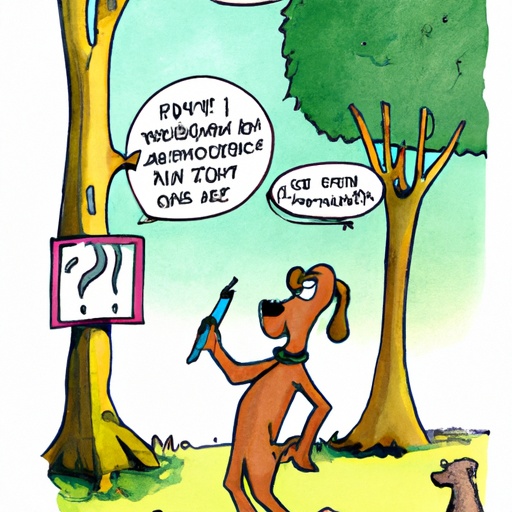Understanding Animal Behavior
As a caregiver, you’ve probably noticed that your male dog has a peculiar habit of marking his territory. This behavior might seem odd or even annoying, especially when it happens in your house. However, it’s essential to understand that this behavior is wholly natural and instinctual for canines.
Dogs, much like their wild ancestors, use marking as a form of communication. By leaving their scent on various objects, they are sending messages to other dogs about their presence, strength, and availability for mating.
The Science Behind Marking
Dogs have an incredibly acute sense of smell, far superior to our own. They use this to gather information about their environment and the animals within it. When your dog marks, it’s not merely a random act; it’s a calculated move to communicate specific information to other dogs.
The urine of male dogs contains various chemicals and pheromones which can tell another dog a lot about them. These can include:
- Their health condition
- Their age
- Their sexual status
So, when you see your dog marking, remember, he’s not just peeing; he’s sending a message.
The Role of Hormones
Hormones play a significant role in marking behavior, particularly testosterone. This hormone is responsible for many of the behaviors we associate with male dogs, including aggression, dominance, and of course, marking.
| Hormone | Effect on Behavior |
|---|---|
| Testosterone | Increases marking, aggression, and dominance |
| Estrogen | Has little effect on marking |
While neutering a male dog can reduce marking behavior due to a decrease in testosterone, it doesn’t always eliminate the behavior entirely.
Dealing with Marking
As a caregiver, it’s crucial to manage marking behavior effectively. While it’s a natural behavior, it’s not acceptable inside the house. Here are some tips to help curb marking:
- Neuter your male dog: this can reduce marking behavior significantly.
- Clean marked areas thoroughly: this can help eliminate the scent and discourage repeat marking.
- Train your dog: teaching basic commands can help control marking behavior.
Marking Versus Medical Issues
It’s important to distinguish between marking behavior and potential medical issues. If your dog is urinating frequently or seems to be in pain, it may not be marking but a sign of a health problem, such as a urinary tract infection. Always consult with a vet if you’re unsure about your dog’s behavior.
FAQs
Q: Why is my neutered dog still marking?
A: Neutering can reduce marking, but it doesn’t eliminate it completely. Your dog might still mark due to habit or if he feels his territory is threatened.
Q: How can I stop my dog from marking inside the house?
A: Neutering, cleaning marked areas thoroughly, and training can help control marking behavior.
Q: Is marking a sign of dominance?
A: Marking can be a sign of dominance. It’s a way for dogs to establish their territory and communicate their presence to other dogs.
Q: Does marking harm my dog in any way?
A: No, marking is a natural behavior and does not harm your dog. However, if your dog is urinating frequently or seems to be in pain, it might be a sign of a health issue.
Q: Does my female dog mark?
A: While marking is more common in males, female dogs can also mark, especially if they feel their territory is threatened.



